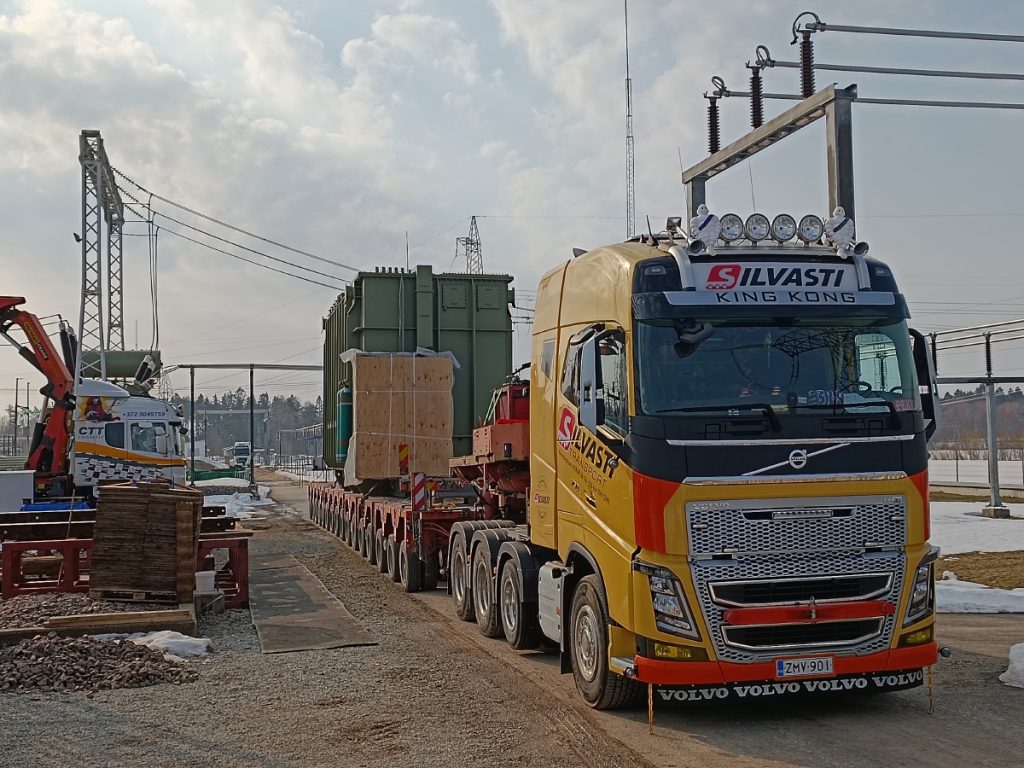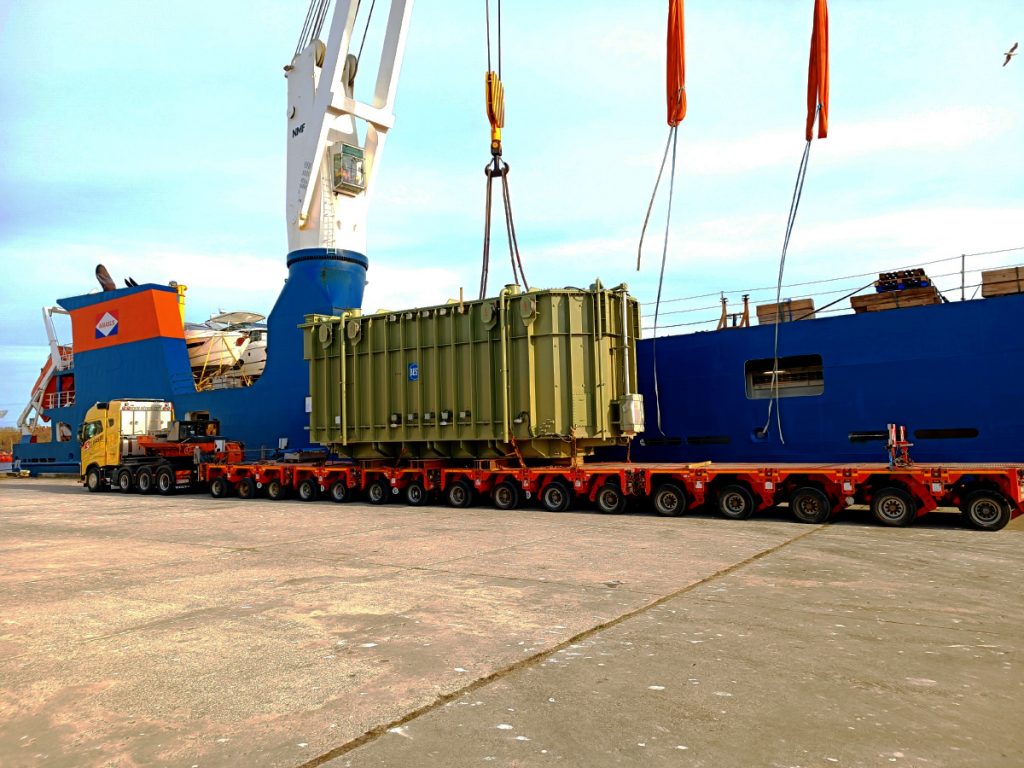Transformers put roads and bridges to the test

Silvasti’s special transports are a familiar sight for many truck spotters. Photos of the largest and most eye-catching convoys get a lot of likes on social media. But when you come across a transformer haulage, the casual bystander might not realise that the modest-looking grey lump may in fact be the heaviest thing you can meet on the road.
The Finnish electricity grid consists of the national main grid, regional networks, and local distribution networks. The networks operate at differing voltages. When switching between networks, a transformer substation is needed to convert t he voltage. There are hundreds of such stations around Finland, each with one or more transformers.
The largest power transformers are mammoths weighing over 300 tonnes. Transformers are manufactured domestically in Finland and also imported; the most distant ones have shipped from South Korea.
Problem-solving starts in sales
Silvasti has decades of solid experience in hauling transformers of all sizes. Sales Manager Mikko Ruohoranta and Transport Operator Anssi Koskinen explain what goes on behind the scenes in these projects.
Mikko: “It all starts, of course, with the customer’s need to get the transformer from point A, usually the factory or port, to point B, the substation. Sales work is very much a problem-solving job. The unloading point is the biggest issue. Where is the transformer going – to the top of a mountain in Norway, to a tunnel a kilometre deep, or somewhere else? First, you need to figure out how to get there.”
“We consult the customer in many ways: how to facilitate access to the site and how to unload the transformer. Can you use a crane or do you need to jack and skid, do you need extra equipment because of the conditions, etc. Silvasti has a solid advantage over many of our competitors. We have the most versatile fleet in the Nordics, experienced staff, and a high level of special expertise. There aren’t many who can unload a transformer, let alone skid it into place. We can handle the whole delivery chain from start to finish.”
Anssi: “ The transport operator’s job begins as soon as the deal with the customer has been signed. It includes site visits and reports, the implementation plan, selecting the equipment (which usually includes jacking and skidding), and scheduling. A transport permit must also be applied for at the relevant ELY Centre.”
“A tall and heavy transformer requires a specific kind of trailer, a low cradle and lots of axles, so the roads can handle the axle weight and the ELY Centre can grant the permit. And if the semi-trailer is really long, a transport permit is required even for an empty vehicle.”
Closely monitored activity
One of the longest transports took place in August 2022. A transformer was to be delivered from the port of Hanko – the southernmost point of Finland – to Kemijärvi in Lapland. The journey covered more than a thousand kilometres and took four days.
Everything went smoothly with Pekka Toivonen behind the wheel. Pekka is a seasoned pro with an IRU (International Road Transport Union) Diploma of Honour.
Anssi: “There was a lot to plan in that case. We had, for example, a railway underpass at Kemijärvi. To be allowed to pass, a vehicle has to be a specified minimum distance from the power line. In that case, they had to cut off the power from the track for the crossing.”
“Bridges are, of course, also bottlenecks for heavy transport. There were about a dozen so-called supervised bridges on the Hanko–Kemijärvi route. This means a bridge supervisor has to be called in for the duration
of the crossing. The ELY Centre permit indicates which bridges are to be supervised, and the supervisor must be called two days in advance. The convoy must also have a traffic controller to stop traffic on the bridge for the duration of the crossing.”

Prepare for surprises
The more challenging the transport, the more likely it is that unexpected situations will emerge along the way that need to be dealt with.
Mikko: ”We try to take surprises into account already at the sales stage. The most important thing is to define where the responsibilities lie: with the consignor, the carrier, or the consignee. An example: in winter, you arrive at the unloading point at a transformer station and there is a metre of snow that hasn’t been removed. It takes half a day to remove it, which for us is downtime.” ”The weather in general is always a potential element of surprise, as are many other things beyond our control, such as a ship being delayed in port.”
Anssi: ”Ideally, the job of the transport operator is done when the haulage starts. Depending on the case, I do follow the progress of a project after the working day, even at home. My phone is always on, so I can react if necessary. There’s rarely a need for that, though: our drivers and escorts are top pros who can solve problems themselves. Their technical know-how is second to none and they can do repairs on their own, and Silvasti service can provide support if necessary.” ”Hauling transformers is a specialist job anyway. A heavy load means more axles, which means more length. The driver has to have a keen eye for choosing waylines, maneuvering junctions, and reversing into narrow unloading areas. On top of that, there’s the jacking and skidding, where the driver assists. This is what Silvasti trains its drivers to do on an ongoing basis.”
EXPERIENCE IS KEY
In the 1970s, the need for a special transport law was recognized in Finland. Companies in the industry were also consulted in the preparation of the law, and Jukka Silvasti, Ville’s father, was an active participant.
Mikko: “Long experience and a deep insight into the development of the special transport sector is one of Silvasti’s key assets. We are one of the longest-standing companies in the industry in Finland. We also operate competitively in other Nordic countries, the Baltic States, Poland, and Germany. We have the most comprehensive transport fleet in the Nordic countries, jacking and skidding tools for a wide range of needs, and versatile unloading equipment, not to mention a top-skilled staff. The future looks bright indeed.”

